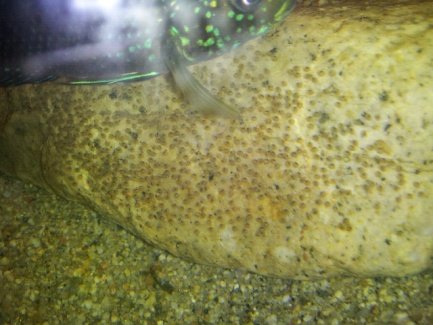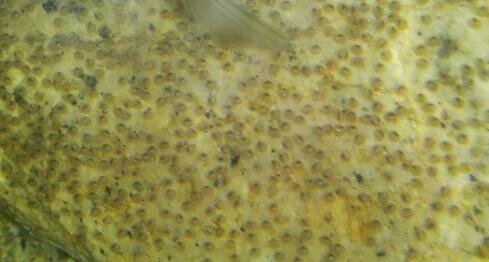The concept of an aquarium that is self-sustaining biologically and produces nitrates in the same numbers as they are consumed by organisms occupying other niches of the nitrogen cycle is one that deals with stocking levels and styles that are for a large part, not at all of interest to the vast majority of people keeping fish. How do you go about normally maintaining this equilibrium in your systems, and under what conditions do you expect it to be achievable? Expecting every tank to be a perpetual creator/consumer of equivalent nitrogen is a seemingly moot endeavor. While it might be possible to create such a system, it is vastly more difficult to create an artificial environment which processes ALL the biological activities of an aquarium properly and not just nitrogen export. There are many other byproducts of keeping a living organism in a closed system which accumulate or are depleted which must be addressed - ammonia, nitrite, and nitrate are only part of a much larger picture.
What precisely do you mean by "freshen" the water? The term is apparently ambiguous to even yourself, as you felt the need to put it in quotations...?
I am interested to hear the details of this system you speak so highly of - please elaborate to the fullest so your simple, foolproof methods might become more clear. There seems to be some form of mis-communication here, perhaps I am not understanding what you are implying with your statements.
I'm sorry if my statements were unclear as this was not my intention. Your closing statement seems to be mixing two of my points so I will try to elaborate.

From what I can ascertain, today's hobbyist seems more about how many fish can I keep in a tank versus how many fish can I safely keep in my tank without creating an overload. Elbow room seems (at least to me) at a premium. Back in those dark ages I keep referring to, rarely were tanks so full of fish that it required a 30%, 40%, 50% or more water change to keep the fish alive and healthy. In fact, water changes of those magnitudes would kill and did kill more fish than would save them. As we have discussed, these were different fish back then.
You wrote "
The concept of an aquarium that is self-sustaining biologically and produces nitrates in the same numbers as they are consumed by organisms occupying other niches of the nitrogen cycle is one that deals with stocking levels and styles that are for a large part, not at all of interest to the vast majority of people keeping fish." which actually makes me sad. You see, as someone who grew up using this technique and seeing the way it made my fish look and act and survive, it only made sense to do it. Plus, the added benefit was that it was much easier to maintain the tank and left me more time to enjoy watching my tanks and not having to work on my tanks. How this can be done can better be shown through the evolution of the saltwater wet/ dry filtering system. The concepts are the same as freshwater filtering.
The original filtering(actually, just the starting point for this conversation so as to keep this short) for saltwater tanks was with an undergravel filter. The drawback, later discovered, was that the waste material and all it's byproducts were still within the tank. Along comes the wet/ dry filter where the ammonia and nitrites were chemically changed through nitrification outside of the aquarium. Along the way, other machines were developed to enhance the water, such as protein skimmers and UV sterilizers and oxygenators that could be added to the external filter's sump and would make the water going back into the tank of a higher quality. BUT the problem still was NITRATES. Again, back in the stone age

, I used to let my algae grow all along the rear glass wall of my SW tanks which consumed the nitrates and helped continue the circle of life (so to speak). The proof was that my water normally tested better than the natural ocean water we were using in the stores I worked at. It's been proven that algaes also provided extra nutrients and trace eliments to the fish that were eating the algae. It was a balancing act as to not having too many fish that would eat all the algae versus not enough algae eaters so the algae went wild and took a lot of time to keep clean. But then came the refugium filter. Most refugiums are stocked with macro algaes which are consuming the nitrates with the added benefit that if the overgrowth of plants was given to the fish to consume, the fish have those extra benefits mentioned before. NOW, a water change is no longer about lowering the nitrate level but more about adding the other elements in the water which may have been absorbed by the tank inhabitants which are not replaced by natural means in a closed system. This was what I meant by " freshening" which I used in quotations because that was the term used when I was first learning about keeping fish. No ambiguity intended.
So to incorporate this into the freshwater tank, a similar system could be created by the insertion of plant life either within the tank itself, if the fish won't destroy them, or via another tank that can be incorporated into a system
whereby the main tank's water goes into this other tank filled with plant life before returning to the main display tank. If this is too complicated a system for the average hobbyist of today, maybe reducing stock load would be a better choice for healthier fish and less maintanence. As for my home tanks, they were not overstocked and used plant life for a more balanced environment or water changes whenever the fish would make keeping plants unwise. This, again, was before centralization of systems which I wouldn't have been able to do anyway under the conditions I was keeping most of my fish tanks( in my bedroom

) that were not in my hatchery building.
So to bring this back to the OP's question about water change, it seems that the Nitrate level has become such an overwhelming concern with everybody that it causes the hobbyist to overreact and do things not necessary at the wrong times. If a fish lays eggs in water that has a nitrate reading of 25 ppm and no ammonia or nitrite levels, why would you change the water? I could see it being a good idea if the fish produced viable eggs and fry before but under these conditions, the eggs didn't hatch or the fry didn't survive after hatching. But to do it because the level isn't "0" per say or because it's, say, Tuesday and my regular wc schedule is to change water on Tuesday, just doesn't make sense to me. That was all I was saying.
As to my "fool proof" methods of breeding fish, yes, I have developed systems and techniques for the many varieties of fish I have bred, that if followed, are almost guaranteed to yield good results. This, of course, is dependant on the quality of the breeder fish themselves. In today's fish, there are years of genetic flaws that have been passed on from generation to generation which now, more than ever, means that in order to have any measurable amount of good fry to survive, you need to have the highest possible hatchout ratio. Now, I'm not saying that my way is the best way, or the only way or that my Dad can hit your Dad harder

( just a joke), I'm just offering to explain how I acheived this by using these methods. I'm pretty sure that I didn't start any reply in this or any other thread with " YOU HAVE TO DO THIS MY WAY OR ELSE YOU WILL FAIL!!!!" because I know that this is not a true statement. Whether you want to try my methods and see for yourself or just want to continue doing things your own way is your choice. I don't have a problem with either way.

I believe I have adequately explained my position and this portion of the conversation really needs to end now so that we can help the OP with this spawning of eggs. If you'd like to continue it, I suggest you start another thread


 , the biggest trick was to get the water just right so that the fish would breed and the eggs would hatch and the fry would live. It was a 3 step process in which many aquarist only got 2 steps right more often then not. By many accounts, by people on this site, fish will breed under any circumstances and the eggs will hatch and the fry will live. I have not, in over 40 years of fish keeping, known this to be true. HOWEVER, I will give them the benefit of the doubt.
, the biggest trick was to get the water just right so that the fish would breed and the eggs would hatch and the fry would live. It was a 3 step process in which many aquarist only got 2 steps right more often then not. By many accounts, by people on this site, fish will breed under any circumstances and the eggs will hatch and the fry will live. I have not, in over 40 years of fish keeping, known this to be true. HOWEVER, I will give them the benefit of the doubt.  The object is to create a stable ecologically sound environment for your fish. If you do this, why change so much water?
The object is to create a stable ecologically sound environment for your fish. If you do this, why change so much water?
